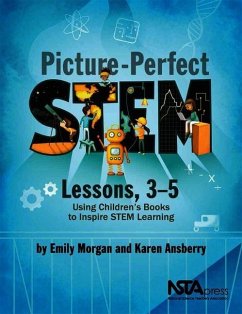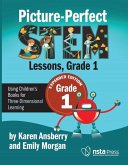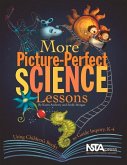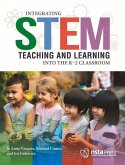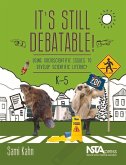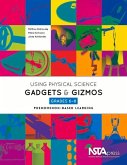"Teachers in our district have been fans of Picture-Perfect Science for years, and it's made a huge impact on how they fit science into their school day. We are so excited to do more of the same with these Picture-Perfect STEM books!" -- Chris Gibler, elementary instructional coach, Blue Springs School District in Missouri "This lively mix of picture books and engaging, standards-based STEM content will be a powerful tool to inspire STEM learning." -- Andrea Beaty, author of Ada Twist, Scientist; Rosie Revere, Engineer; and Iggy Peck, Architect For teachers eager to integrate STEM into their school day, Picture-Perfect STEM Lessons is an exciting development. This book's 15 kid-friendly lessons convey how science, technology, engineering, and mathematics intersect in the real world. They embed reading-comprehension strategies that integrate the STEM subjects and English language arts through high-quality picture books. You'll help your 3- 5 students engage in STEM activities while learning to read and reading to learn. This volume of Picture-Perfect STEM Lessons for the upper-elementary grades uses a remarkable variety of books to teach STEM concepts and reading comprehension strategies. For example, you can pique students' interest with The Inventor's Secret; An Ambush of Tigers; and Trash to Treasure: A Kid's Upcycling Guide to Trash. Then, through the accompanying lessons, you can teach ways to plan and carry out investigations; analyze and interpret data; and construct explanations and design solutions. Along the way, your students will invent toy cars, learn how scientists use technology to track individual animals within larger groups, figure out how to reduce plastic pollution, and tackle other real-world projects. Engaging fiction and nonfiction books plus 15 hands-on lessons add up to perfect ways to learn about the interdependence of the STEM areas. Along with these new lessons come the easy-to-use features that have made Picture-Perfect a bestselling series for more than a dozen years: - Fiction and nonfiction book pairs - Background reading, materials lists, student pages, and assessments for each lesson - Connections to science standards and the Common Core State Standards for both English language arts and mathematics. Picture-Perfect STEM is a powerful tool for guiding instruction. You'll love how effective this book is, and your students will love learning about STEM.

